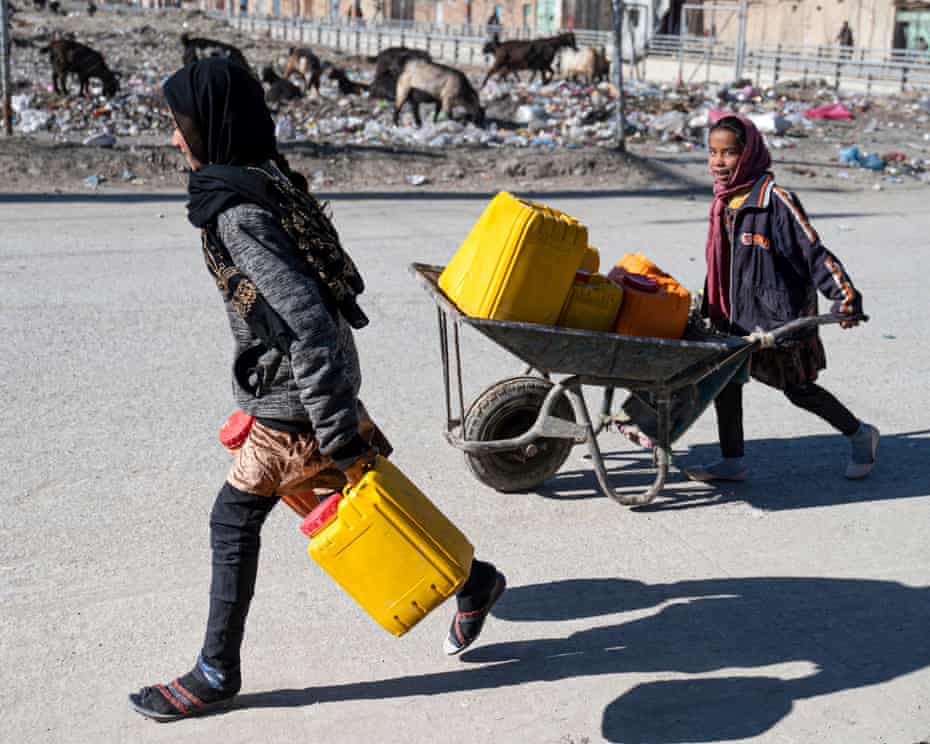Kabul, Afghanistan’s sprawling capital of seven million residents, could become the first modern city to entirely run out of water by the end of this decade, according to a stark new report by international aid agency Mercy Corps.
Years of rapid urbanisation, climate change, poor governance, and over-extraction have pushed Kabul’s aquifers to the edge. Water tables have plunged by as much as 30 metres over the past decade, while extraction outpaces natural recharge by an alarming 44 million cubic metres annually.
Mercy Corps warns that if current trends persist, the city’s aquifers may be completely depleted by 2030, posing an existential threat to its population.
“There should be a committed effort to document this better and to draw international attention to the need to address the crisis,” said Dayne Curry, Mercy Corps’ country director in Afghanistan. “No water means people leave their communities, so for the international community to not address the water needs of Afghanistan will only result in more migration and more hardship for the Afghan people.”
Kabul’s boreholes drying, prices rising
The city’s reliance on boreholes, its primary water source, is proving increasingly unsustainable. Nearly half of Kabul’s boreholes have dried up, with many households now spending up to 30 per cent of their income on water. Two-thirds of residents are in debt due to water costs.
“We used to pay 500 afghanis every 10 days to fill our cans from the water tankers. Now, that same amount of water costs us 1,000 afghanis,” said Nazifa, a teacher in the Khair Khana neighbourhood. “The situation has been getting worse over the past two weeks. We are afraid it will get even more expensive.”
Private companies have begun exploiting the crisis, digging deeper wells to extract public groundwater and reselling it at inflated prices to desperate residents.
Contaminated and Unsafe
The crisis isn’t limited to scarcity. As Kabul’s groundwater levels dwindle, water quality has deteriorated dramatically. Up to 80% of the city’s groundwater is now considered unsafe due to high concentrations of sewage, salinity, and arsenic, according to the report.
“Afghanistan is facing a lot of problems, but this water scarcity is one of the hardest,” said Nazifa. “Adequate, good quality, well water just doesn’t exist.”
Despite the gravity of the crisis, international support remains limited. Earlier this year, the UN’s Office for the Coordination of Humanitarian Affairs reported receiving only $8.4 million of the $264 million required for water and sanitation programs in Afghanistan. Additionally, around $3 billion in international funding has been frozen since the Taliban took power in 2021. A further blow came with the United States’ decision to cut more than 80% of its USAID funding for the country.
“Everything is so aid-dependent,” said Curry. “We can throw millions of dollars at short-term water fixes and say we’ve addressed the need, but that need will continue until there’s better investment for longer-term solutions. And that’s where foreign governments are stopping short at this point due to political dynamics.”
Hope in the Pipeline
One glimmer of hope lies in the Panjshir River pipeline project, which could provide clean drinking water to 2 million Kabul residents. Design work was completed in late 2024, but the project’s $170 million cost still lacks full funding. The Afghan government is currently seeking additional investors.
Dr. Najibullah Sadid, a senior researcher in water resource management, emphasised the urgency of action.
“We don’t have time to sit around waiting for budgets,” he said. “We are caught in a storm from which there will be no return if we don’t act immediately. Those in Kabul are in a situation where they have to decide between food and water. And yet, the locals we’ve spoken to are still willing to invest what little they have towards a sustainable solution. Whichever project will bring the most immediate impact is the priority. We just need to start somewhere.”
Back in Khair Khana, Nazifa reflects on the worsening conditions.
“Water is a human right and a natural resource of Afghanistan. It is not a political issue,” she said. “My heart bleeds when I look at the flowers and fruit trees in the garden, all drying up. But what can we do? We are currently living in a military state, so we can’t exactly go to the government to report the issue.”
As Kabul hurtles toward a potentially irreversible environmental disaster, experts agree that urgent, coordinated, and well-funded action is the only way to prevent the city from going dry



